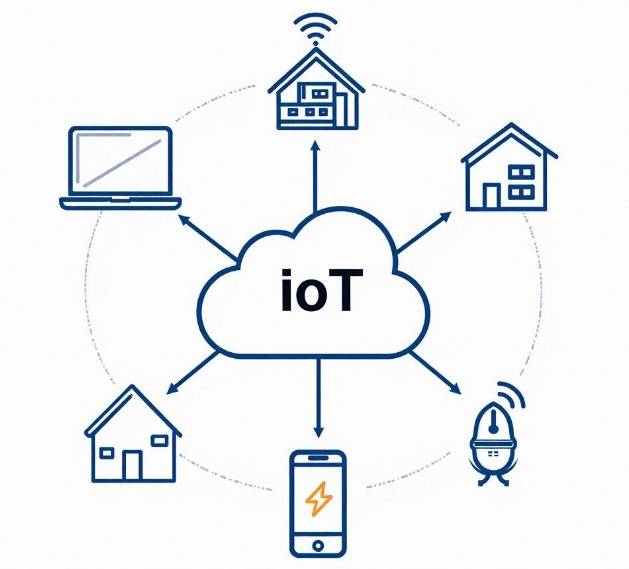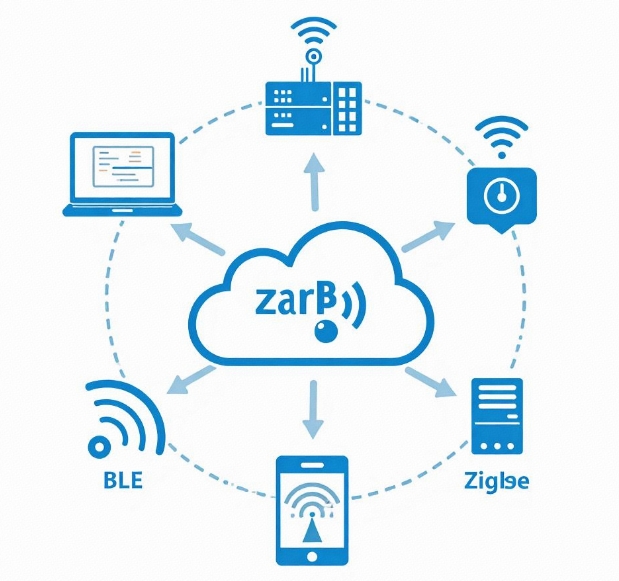Low-Power Technologies and Solution Selection in IoT Development
- latest articles
- 1.DApp Development & Customization: Merging Diverse Market Needs with User Experience 2.Analysis of the Core Technical System in DApp Project Development 3.How to achieve cross-chain interoperability in Web3 projects? 4.How does the tokenization of points reconstruct the e-commerce ecosystem? 5.How to Set and Track Data Metrics for a Points Mall? 6.What is DApp Development? Core Concepts and Technical Analysis 7.Inventory of commonly used Web3 development tools and usage tips 8.Development of a Distribution System Integrated with Social E-commerce 9.Six Key Steps for Businesses to Build a Points Mall System 10.What is DApp Development? A Comprehensive Guide from Concept to Implementation
- Popular Articles
- 1.Future Trends and Technology Predictions for APP Development in 2025 2.Analysis of the DeFi Ecosystem: How Developers Can Participate in Decentralized Finance Innovation 3.From Zero to One: How PI Mall Revolutionizes the Traditional E-commerce Model 4.DAPP Development | Best Practices for Professional Customization and Rapid Launch 5.How to Develop a Successful Douyin Mini Program: Technical Architecture and Best Practices 6.Recommended by the Web3 developer community: the most noteworthy forums and resources 7.From Cloud Computing to Computing Power Leasing: Building a Flexible and Scalable Computing Resource Platform 8.Shared Bike System APP: The Convenient Choice in the Era of Smart Travel 9.How to Create a Successful Dating App: From Needs Analysis to User Experience Design 10.From Design to Development: The Complete Process of Bringing an APP Idea to Life
The Internet of Things (IoT), as a vital component of modern technology, has permeated various industries, from smart homes to smart cities and industrial automation, all relying on the proliferation and development of IoT. However, with the rapid increase in the number of IoT devices, managing their energy efficiency and power consumption has become an issue that cannot be overlooked. Especially in many application scenarios, the battery life of devices is a critical factor affecting system performance and stability, making low-power technology play an essential role in IoT development.
This article will explore low-power technologies and solution choices in IoT development, covering multiple aspects from hardware design and communication protocols to system optimization. It will analyze the advantages and applicable scenarios of various low-power technologies, providing developers with valuable references and guidance.
Challenges of Power Consumption in IoT Devices
IoT devices are often deployed in remote or hard-to-reach locations, particularly sensor nodes and edge devices. These devices typically rely on battery power, and with limited battery capacity, extending their battery life is crucial. Additionally, as the variety of IoT devices diversifies, the complexity of power management increases. Without effective power control solutions, frequent battery replacements may be required, raising maintenance costs and impacting device stability and reliability.
The power consumption issues of IoT devices generally involve the following aspects:
Sensor Power Consumption: Sensors are one of the core components of IoT devices, and different types of sensors vary significantly in power consumption during operation. Therefore, selecting low-power sensors is crucial for extending battery life.
Communication Module Power Consumption: Most IoT devices require wireless communication modules to transmit data with other devices. The power consumption differences among wireless communication protocols (such as Wi-Fi, Bluetooth, ZigBee, LoRa, etc.) directly affect the overall energy efficiency of the devices.
Data Processing and Processor Power Consumption: Data collection, processing, storage, and transmission all require computational resources. The energy efficiency optimization of processors and memory is a significant factor influencing the power consumption of IoT devices.
Basic Principles of Low-Power Technology
The core goal of low-power technology is to minimize the energy consumption of IoT devices while ensuring their functionality. Technical approaches to achieve this include hardware design, communication protocol selection, and system optimization at multiple levels. Specifically, low-power technology can be improved in the following aspects:
Low-Power Hardware Design: At the hardware level, selecting low-power chips, sensors, and communication modules is the most direct way to reduce power consumption. For example, using low-power microcontrollers (MCUs) and embedded processors can significantly reduce standby power consumption. Additionally, employing low-power sensors and wireless modules helps lower the overall system energy consumption.
Low-Power Communication Protocols: The power consumption of communication modules often accounts for a large portion of the total power consumption of IoT devices. To achieve low power consumption, selecting suitable low-power communication protocols for the application scenario is crucial. For instance, Bluetooth Low Energy (BLE), ZigBee, and LoRa perform excellently in long-distance communication and low power consumption. Especially in sensor networks, the choice of these protocols is vital for extending device battery life.
Intelligent Sleep and Wake-Up Mechanisms: IoT devices can typically switch between active and standby states. Optimizing the device's operational state can effectively reduce power consumption. For example, when a device is in standby, the system can enter a low-power mode and resume operation when necessary through intelligent wake-up mechanisms. Many low-power chips and modules have built-in sleep modes that reduce power consumption during periods when communication and computation are not required.
Data Compression and Distributed Processing: Data transmission in IoT devices often requires significant bandwidth, and the amount of data directly relates to power consumption. By optimizing data transmission methods, such as compressing data and reducing unnecessary transmissions, power consumption during communication can be effectively reduced. Additionally, distributed processing is an effective technique for lowering power consumption, where some data processing tasks are completed on edge devices, reducing the frequency of data transmission.
Energy Harvesting and Self-Powering Technologies: With technological advancements, energy management methods for IoT devices have also improved. Energy harvesting technologies such as solar power, thermoelectric generation, and vibration-based power generation are beginning to be applied in some IoT devices, enabling them to self-power using environmental energy and reducing reliance on traditional batteries. Such technologies not only significantly lower power consumption but also enhance the long-term usability of devices.
Selection of Low-Power Solutions
For different application scenarios, there are various low-power solutions for IoT devices. Below are some typical low-power solutions and their applicable situations:
1. Bluetooth Low Energy (BLE)
Bluetooth Low Energy (BLE) technology is a low-power communication protocol designed for short-range communication. It is widely used in personal health devices, smart homes, and other fields. BLE employs short-packet data transmission, reducing energy consumption during transmission. Its key feature is that devices remain in sleep mode most of the time and only wake up when communication is needed, significantly extending battery life.
Typical application scenarios for BLE include smart bracelets, smart home devices, and asset tracking. It is particularly suitable for scenarios requiring long battery life and short communication distances.
2. ZigBee
ZigBee is a low-power, low-data-rate communication protocol suitable for large-scale wireless networks. It is commonly used in home automation, smart agriculture, and other fields. ZigBee utilizes a self-organizing, self-healing network architecture, supporting large-scale sensor networks while maintaining low power consumption.
ZigBee is highly suitable for IoT applications requiring extensive coverage and multi-device connectivity, especially in smart buildings, industrial control, and environmental monitoring.
3. LoRa
LoRa (Long Range) is a low-power, long-distance wireless communication technology suitable for large-scale IoT applications. The advantage of LoRa is its long transmission range, covering several kilometers while maintaining low power consumption, making it ideal for city-wide sensor networks such as smart cities and agricultural monitoring.
The benefit of LoRa networks is their ability to support low-power sensors operating over vast areas for extended periods, making them highly suitable for remote monitoring and asset management scenarios.
4. 5G Low-Power Wide-Area Network (LPWAN)
The development of 5G technology has further expanded the application scenarios for low-power IoT. 5G networks offer lower latency, higher bandwidth, and stronger transmission capabilities. Meanwhile, the Low-Power Wide-Area Network (LPWAN) technology within 5G is gradually being applied in the IoT field. LPWAN supports low-power devices communicating over wide areas, making it suitable for long-term monitoring applications such as smart meters and smart parking.
Conclusion
With the continuous development of IoT technology, low-power technology has become an indispensable part of the IoT development process. Through reasonable hardware design, communication protocol selection, and system optimization, the energy efficiency of IoT devices can be significantly improved, extending battery life, reducing maintenance costs, and thereby enhancing the overall performance of the system.
-

How to Use IoT Development to Enhance Supply Chain Efficiency
With the rapid development of the global economy and the deepening of digital tr···
-

Development and Innovation of the Internet of Things in the Healthcare Sector
With the rapid advancement of information technology, the Internet of Things (Io···
-

Data Storage and Analysis Methods in IoT Development
The Internet of Things (IoT) is one of the most revolutionary innovations in tod···

 Blockchain
Blockchain












